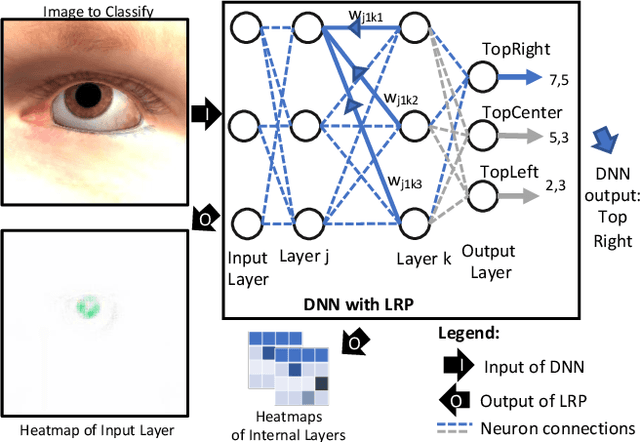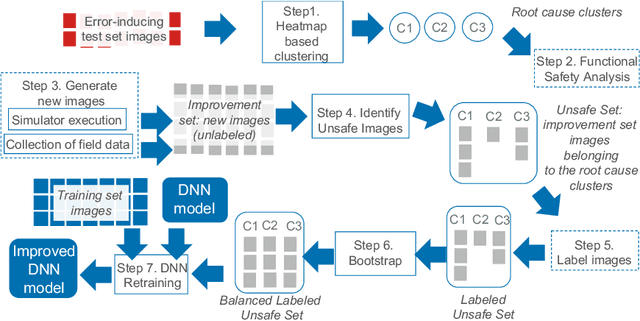Mohammed Oualid Attaoui
DNN Explanation for Safety Analysis: an Empirical Evaluation of Clustering-based Approaches
Jan 31, 2023Abstract:The adoption of deep neural networks (DNNs) in safety-critical contexts is often prevented by the lack of effective means to explain their results, especially when they are erroneous. In our previous work, we proposed a white-box approach (HUDD) and a black-box approach (SAFE) to automatically characterize DNN failures. They both identify clusters of similar images from a potentially large set of images leading to DNN failures. However, the analysis pipelines for HUDD and SAFE were instantiated in specific ways according to common practices, deferring the analysis of other pipelines to future work. In this paper, we report on an empirical evaluation of 99 different pipelines for root cause analysis of DNN failures. They combine transfer learning, autoencoders, heatmaps of neuron relevance, dimensionality reduction techniques, and different clustering algorithms. Our results show that the best pipeline combines transfer learning, DBSCAN, and UMAP. It leads to clusters almost exclusively capturing images of the same failure scenario, thus facilitating root cause analysis. Further, it generates distinct clusters for each root cause of failure, thus enabling engineers to detect all the unsafe scenarios. Interestingly, these results hold even for failure scenarios that are only observed in a small percentage of the failing images.
Black-box Safety Analysis and Retraining of DNNs based on Feature Extraction and Clustering
Jan 14, 2022



Abstract:Deep neural networks (DNNs) have demonstrated superior performance over classical machine learning to support many features in safety-critical systems. Although DNNs are now widely used in such systems (e.g., self driving cars), there is limited progress regarding automated support for functional safety analysis in DNN-based systems. For example, the identification of root causes of errors, to enable both risk analysis and DNN retraining, remains an open problem. In this paper, we propose SAFE, a black-box approach to automatically characterize the root causes of DNN errors. SAFE relies on a transfer learning model pre-trained on ImageNet to extract the features from error-inducing images. It then applies a density-based clustering algorithm to detect arbitrary shaped clusters of images modeling plausible causes of error. Last, clusters are used to effectively retrain and improve the DNN. The black-box nature of SAFE is motivated by our objective not to require changes or even access to the DNN internals to facilitate adoption. Experimental results show the superior ability of SAFE in identifying different root causes of DNN errors based on case studies in the automotive domain. It also yields significant improvements in DNN accuracy after retraining, while saving significant execution time and memory when compared to alternatives.
Improved Multi-objective Data Stream Clustering with Time and Memory Optimization
Jan 13, 2022



Abstract:The analysis of data streams has received considerable attention over the past few decades due to sensors, social media, etc. It aims to recognize patterns in an unordered, infinite, and evolving stream of observations. Clustering this type of data requires some restrictions in time and memory. This paper introduces a new data stream clustering method (IMOC-Stream). This method, unlike the other clustering algorithms, uses two different objective functions to capture different aspects of the data. The goal of IMOC-Stream is to: 1) reduce computation time by using idle times to apply genetic operations and enhance the solution. 2) reduce memory allocation by introducing a new tree synopsis. 3) find arbitrarily shaped clusters by using a multi-objective framework. We conducted an experimental study with high dimensional stream datasets and compared them to well-known stream clustering techniques. The experiments show the ability of our method to partition the data stream in arbitrarily shaped, compact, and well-separated clusters while optimizing the time and memory. Our method also outperformed most of the stream algorithms in terms of NMI and ARAND measures.
 Add to Chrome
Add to Chrome Add to Firefox
Add to Firefox Add to Edge
Add to Edge